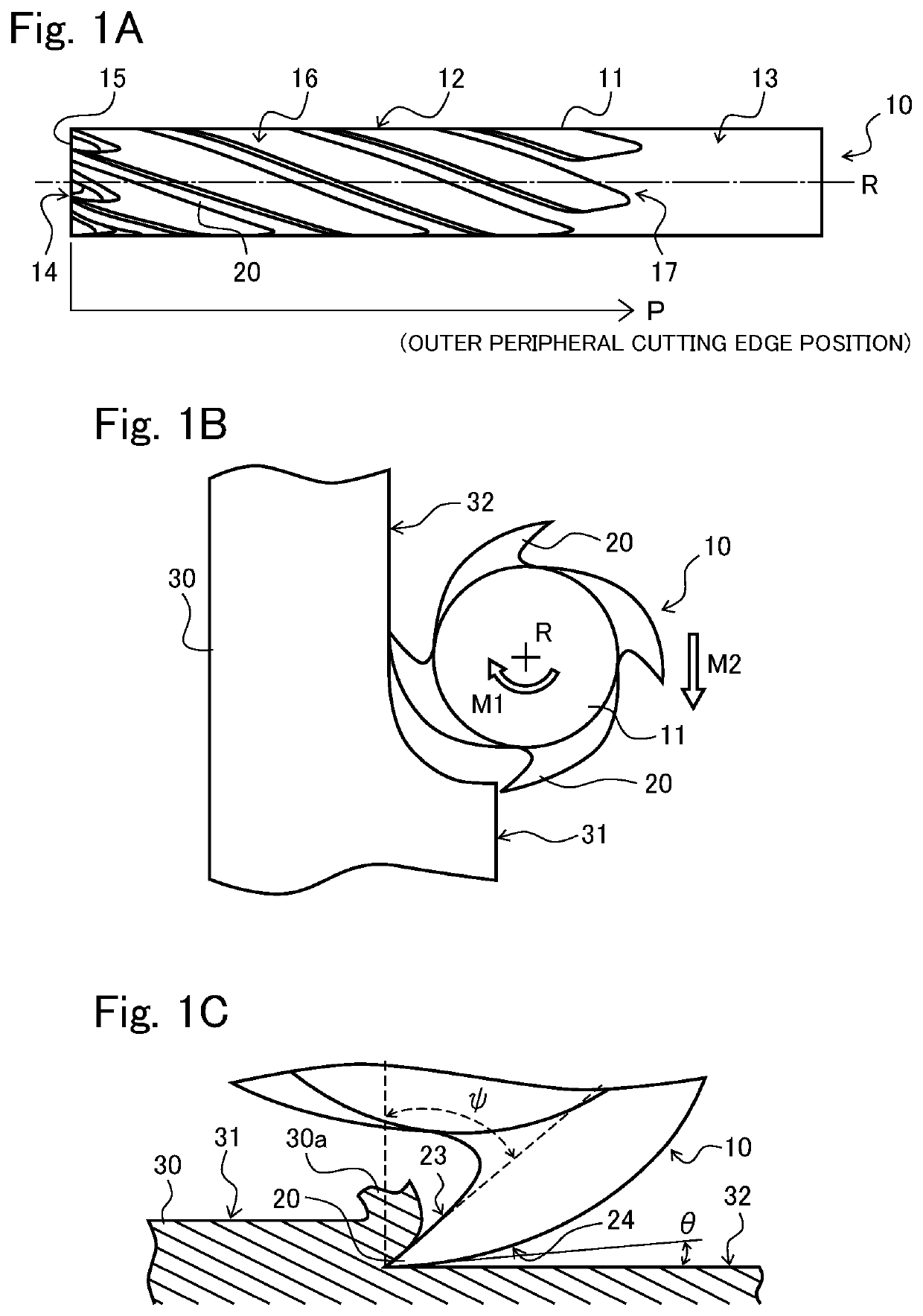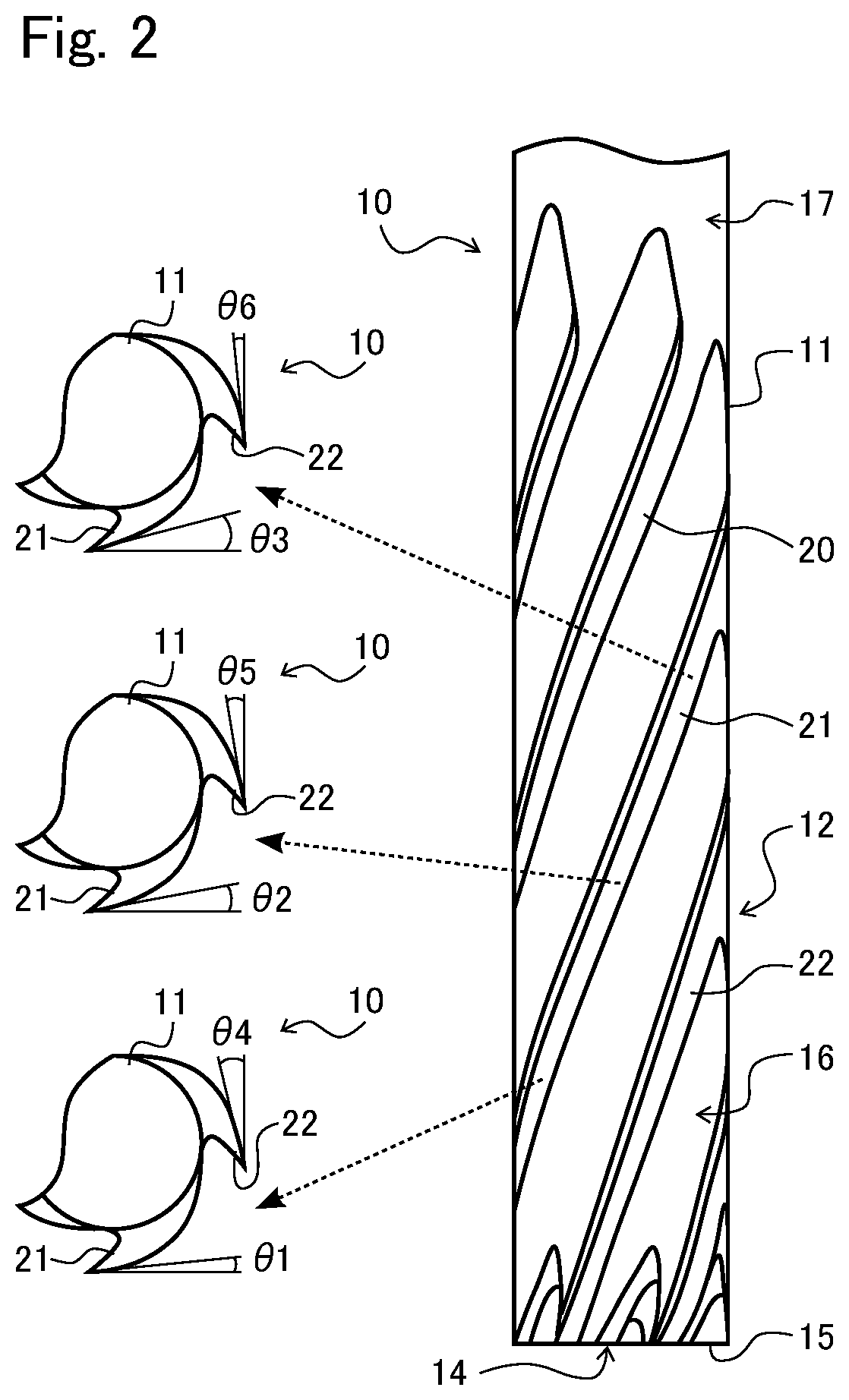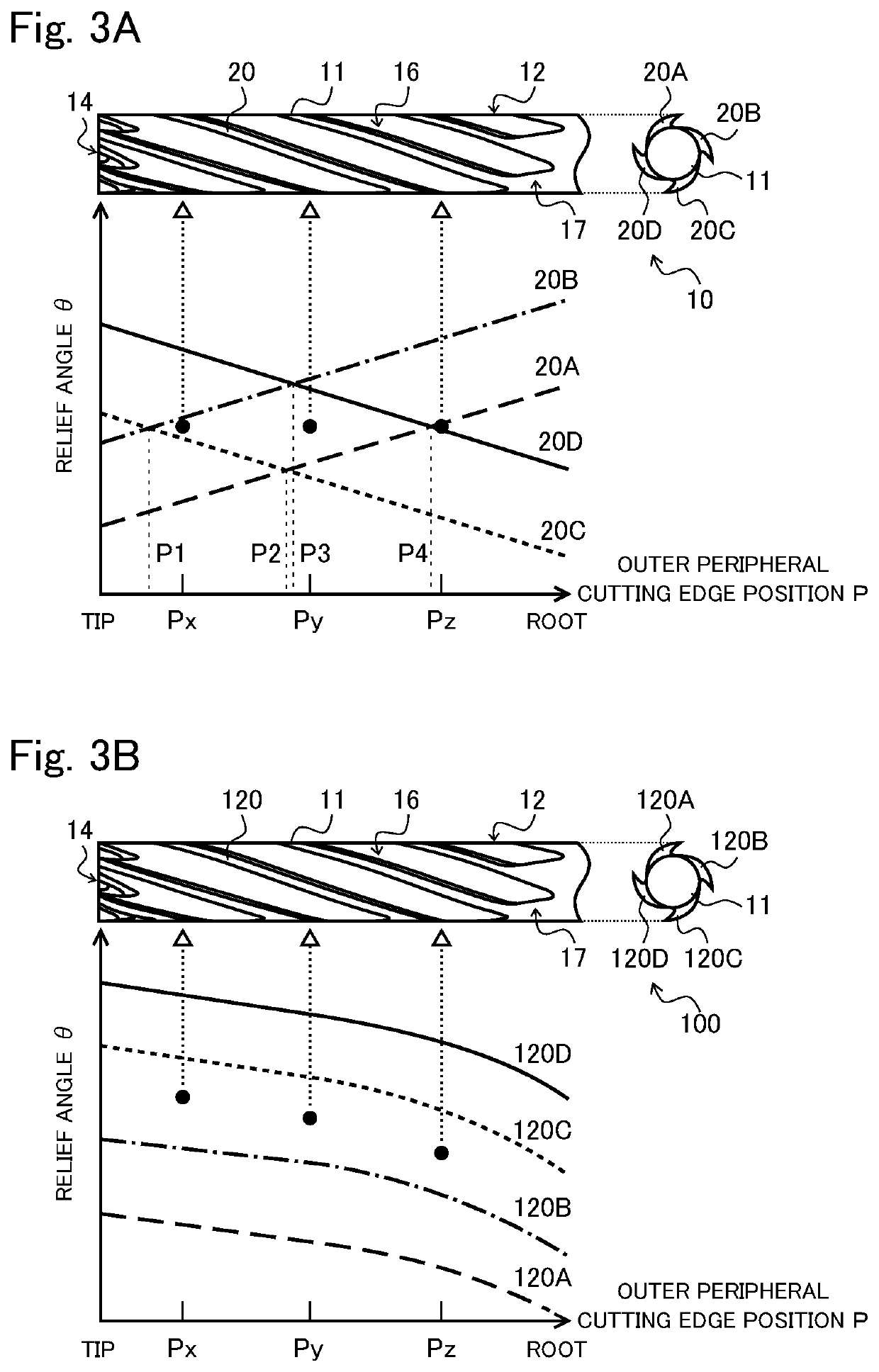End mill
a technology of end mills and grinding plates, which is applied in the direction of metal-working equipment, milling equipment, manufacturing tools, etc., can solve the problems of lowering the thickness precision of the workpiece, deteriorating the surface roughness of the machined surface of the workpiece, and affecting the cutting process. , to achieve the effect of suppressing excessive cutting resistance, suppressing chatter vibrations, and suppressing the lowering of the precision or efficiency of the cutting process
- Summary
- Abstract
- Description
- Claims
- Application Information
AI Technical Summary
Benefits of technology
Problems solved by technology
Method used
Image
Examples
Embodiment Construction
[0016]Hereinafter, a representative embodiment of the present disclosure is described with reference to the drawings. In the drawings, the same or corresponding elements are denoted by the same reference signs, and repeating the same descriptions is avoided below.
[0017][Fundamental Configuration of an End Mill]
[0018]As shown in FIG. 1A, an end mill 10 includes a columnar tool body 11, a cutting part 12, and a shank 13. The cutting part 12 is positioned on the one end face (first end face) side of the tool body 11, and the shank 13 is positioned on the other end face (second end face) side of the tool body 11. For the sake of convenience of the description, the end face of the side on which the cutting part 12 is positioned is referred to as a bottom face 14.
[0019]The cutting part 12 is provided with cutting edges. Specifically, the cutting part 12 includes a plurality of end cutting edges 15 provided on the bottom face 14 and a plurality of outer peripheral cutting edges 20 provided...
PUM
 Login to View More
Login to View More Abstract
Description
Claims
Application Information
 Login to View More
Login to View More - R&D
- Intellectual Property
- Life Sciences
- Materials
- Tech Scout
- Unparalleled Data Quality
- Higher Quality Content
- 60% Fewer Hallucinations
Browse by: Latest US Patents, China's latest patents, Technical Efficacy Thesaurus, Application Domain, Technology Topic, Popular Technical Reports.
© 2025 PatSnap. All rights reserved.Legal|Privacy policy|Modern Slavery Act Transparency Statement|Sitemap|About US| Contact US: help@patsnap.com



